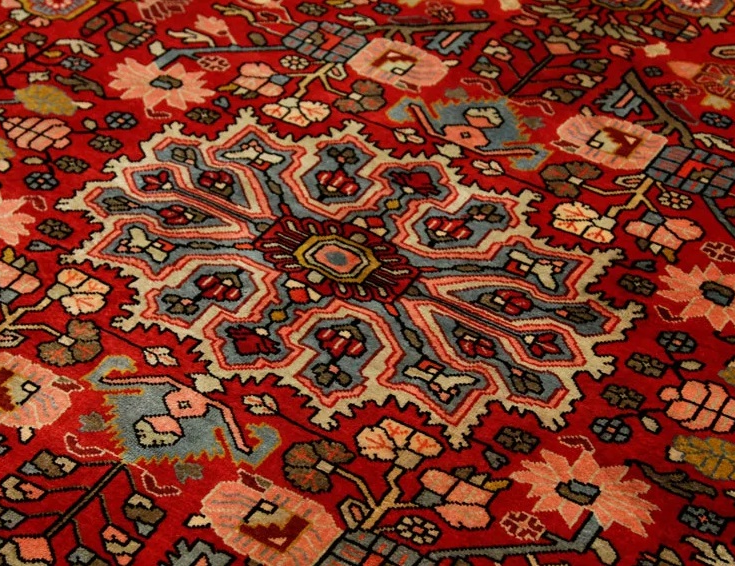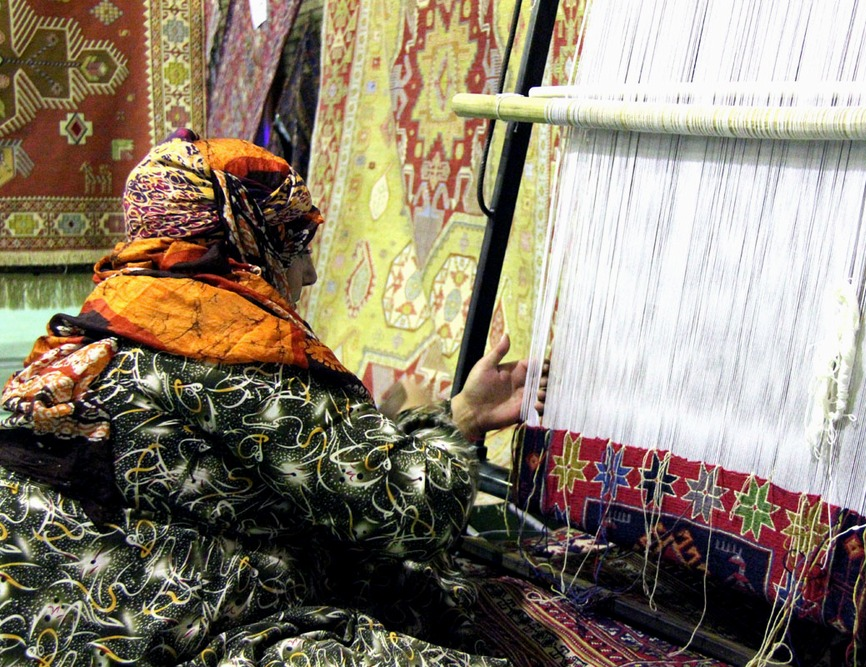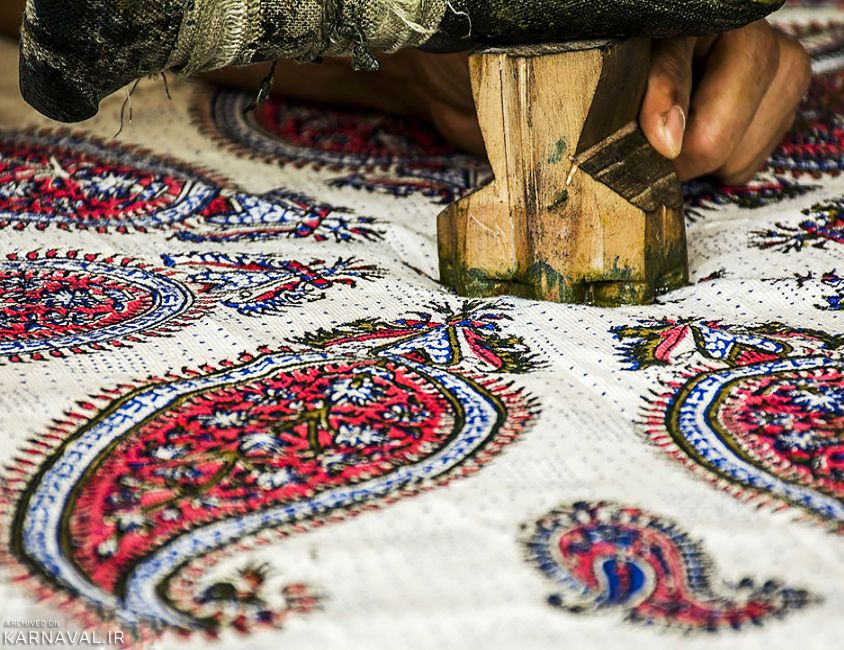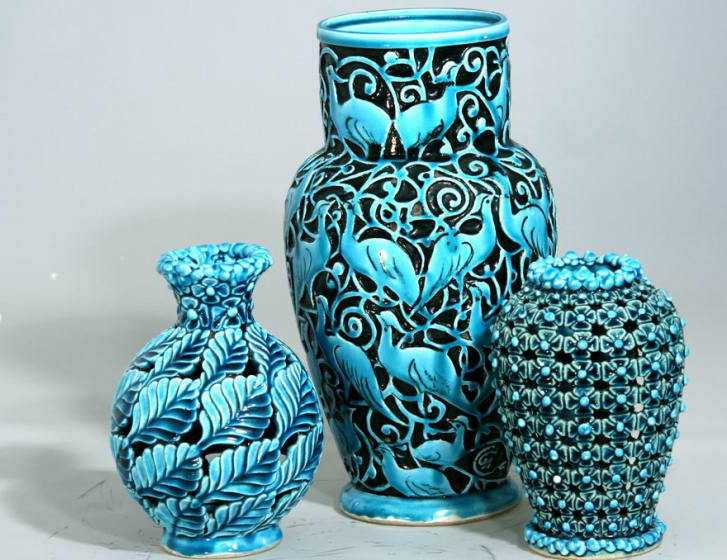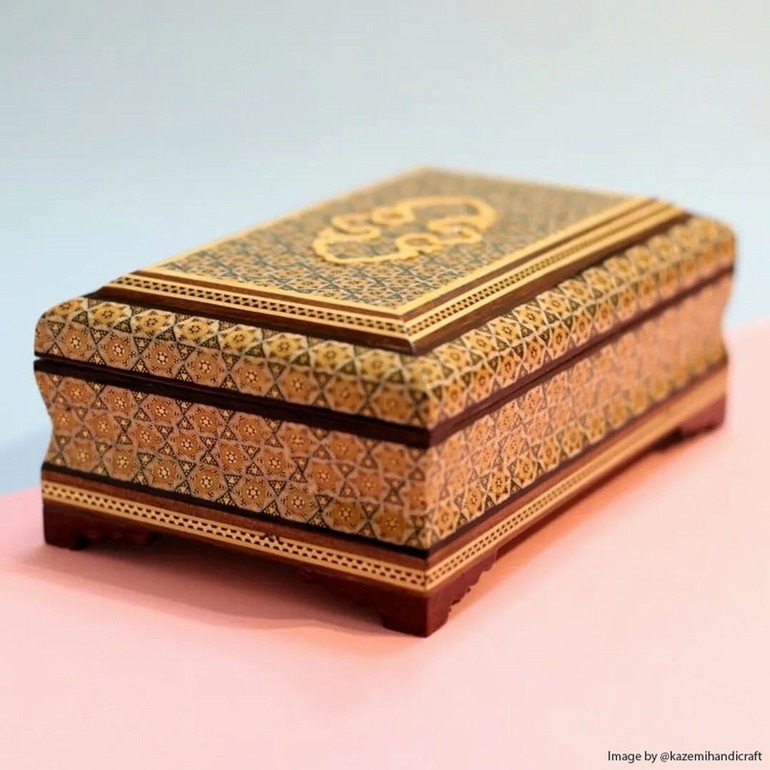
The Saddlebag Weaving Craft of Ashkezar
Saddlebag weaving is one of the handicrafts that is done on a boom. The product of this art is a double-sided bag that is usually placed on a horse or a donkey and is used to carry a load.
The Craft of Saddlebag Weaving and Its Features
In terms of method, saddlebag weaving can be considered one of the sub-branches of carpet weaving. Like Iranian Glim, Zilu, Jajim, and other handwoven rugs. A saddlebag is a type of flat knitted product in which warp and weft are used alone without the presence of lint to shape the woven item and create designs and patterns. This item is woven on vertical looms, similar to that of zilu, but in some nomadic areas, weaving them on horizontal looms is also popular. In some places, colorful threads are used to weave saddlebags, but the ones woven by the nomads of the south and west of Iran and the people of the villages in the central regions of Iran have limited colors and designs. Saddlebags made by nomadic people are mainly woven with red background.
Cotton threads are the primary material of weaving saddlebags; although sometimes these items are made with woolen threads or by sewing pieces of cloth together. In saddlebag weaving, traditional methods, and very simple and basic tools are used. The weaver moves the threads and passes the weft through them with the power of his foot and pressing the pedal, then knocks the weft with a device called “daftin” (weaver’s comb) so that he can weave the next row. In this way, the rhythmic sound of pressing the pedal and hitting the weft with the daftin echoes out from saddlebag weaving workshops. Sometimes the weavers whisper poems and songs with the beats so created.
After the fabric is taken down from the loom, it is folded into the desired size and sewn to create a bag. In the last stage of saddlebag weaving, its edges are lined with thick colored threads. In addition to increasing the strength and durability of saddlebags, this work also helps to make them more beautiful.
Different Types of Saddlebags and Their Uses
Saddlebags were used to carry cargo from the distant past. In fact, this item is like a double-sided bag that is placed on the back of the animals that carry loads. There is another type of this item, which is used by people in the form of placing it on their shoulders. These bags are produced in two ways: one-sided, which has a strap like a bag and hangs on the shoulder and is called “Janteh”. And a double-sided one, which is placed over the shoulder in such a way that one side is placed in front and the other bag is placed on the person’s back. Some types of this item are also used for motorcycles or bicycles. The width of this product usually varies between 30 and 90 cm, depending upon the way it is used This product is mostly used in rural and nomadic communities. Among some nomadic groups, the saddlebag is considered a very necessary tool and is considered an essential part of the dowry of the newlywed brides.
National Symbols in the Art and Craft of Saddlebag Weaving
Saddlebag weaving is popular in rural and nomadic communities of Iran. There are workshops dedicated to this craft in different parts of Iran, but among them, the method used for weaving it in Ashkezar of Yazd Province was inscribed on the list of Iran’s intangible national heritage in the year 2019 AD. According to the people of Ashkezar, the history of saddlebag weaving in this region dates back to more than a century ago. Also, the skill and technique of saddlebag weaving of Ardabil and that of the Bakhtiari regions of Khuzestan province were inscribed on this list in the years 2012 and 2016 AD respectively. The Bakhtiari-inhabited areas of Khuzestan Province, including such cities and counties as Lali, Haftgel, Andimshek, Andika, Shushtar, Dezful, Izeh, and Masjed Soleyman are among the areas where saddlebag weaving is done with horizontal looms. This product is called “Chinehgar” in the dialect of the nomads. Horzhin, which usually has a red background and black threads are worked in it, is sometimes opened and used as a rug.
Chaharmahal va Bakhtiari, Lorestan, Kohgiluyeh and Boyer-Ahmad provinces, Tabas Countty (South Khorasan), and the Hasanabad Village of Jarqavieh Countty (Isfahan) are other major centers of saddlebag production. Small saddlebag weaving workshops are still active in Hasanabad Village and a large number of its residents engage in this profession.
| Name | The Saddlebag Weaving Craft of Ashkezar |
| Country | Iran |
| Cities | |
| Registration | National |
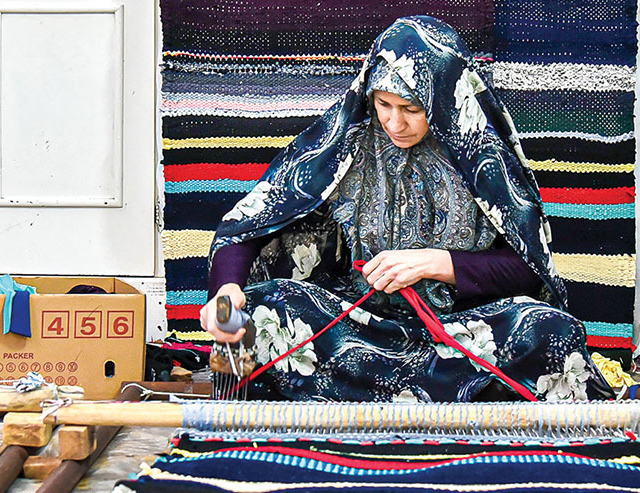
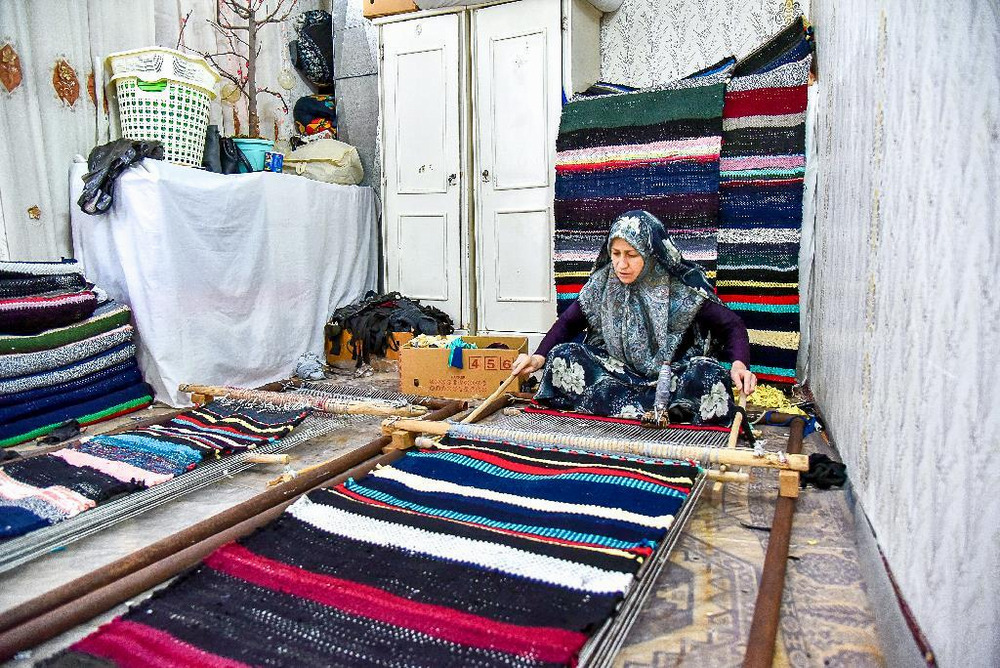
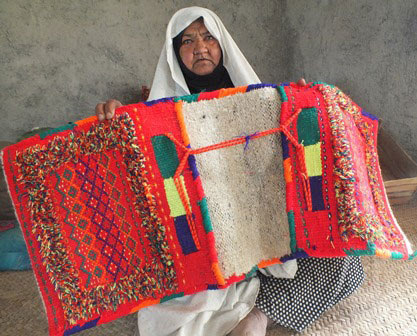



Choose blindless
Red blindless Green blindless Blue blindless Red hard to see Green hard to see Blue hard to see Monochrome Special MonochromeFont size change:
Change word spacing:
Change line height:
Change mouse type:
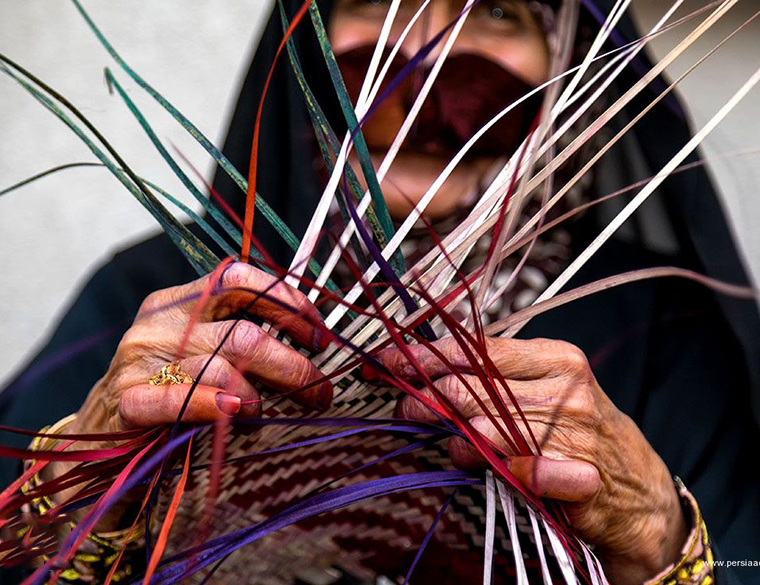
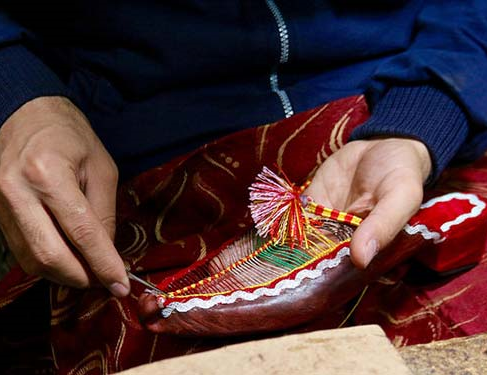
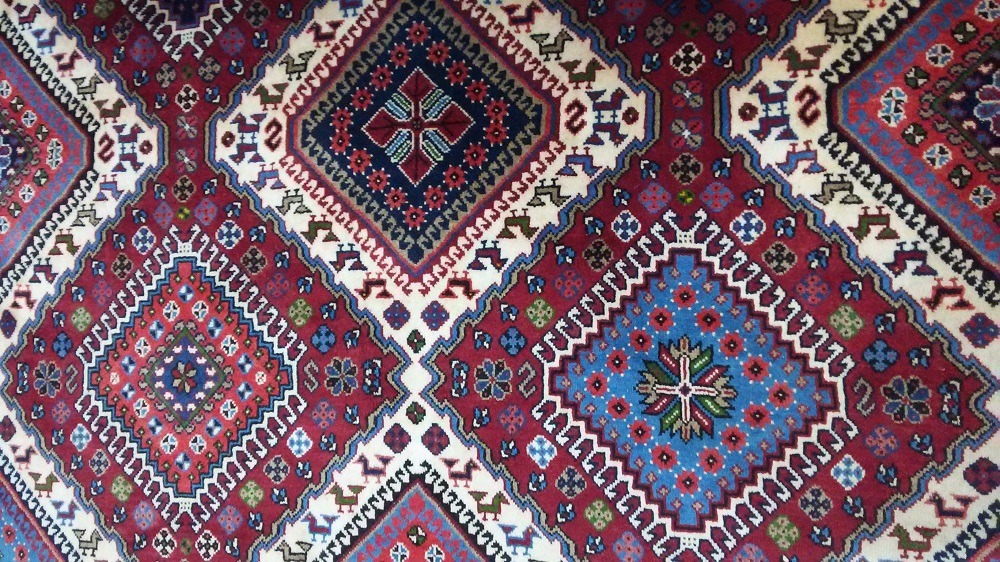
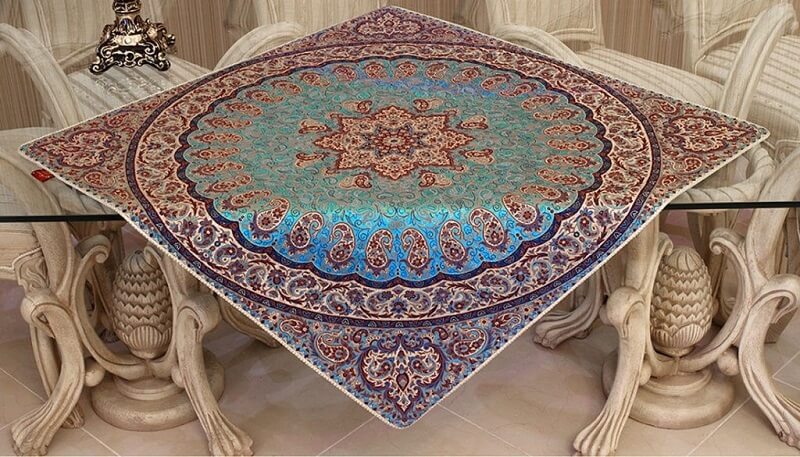
_crop_2.jpg)
